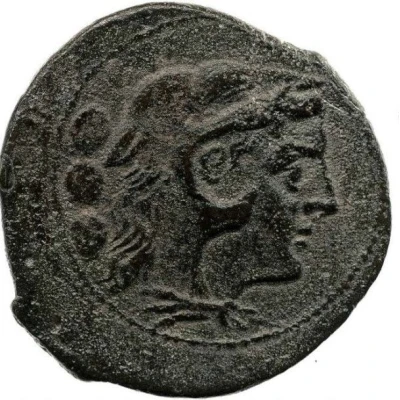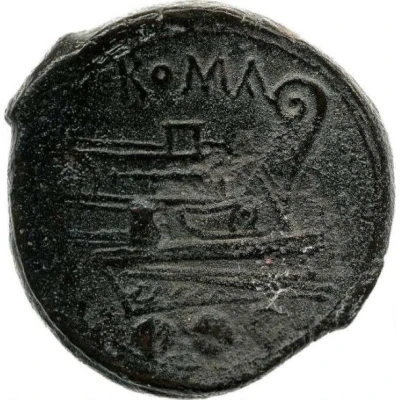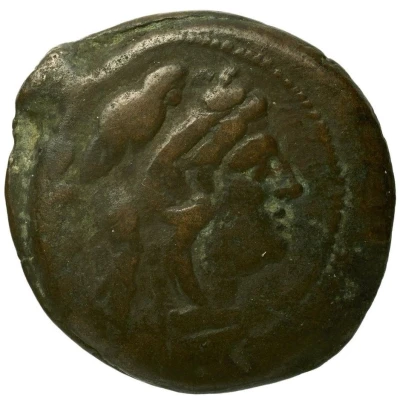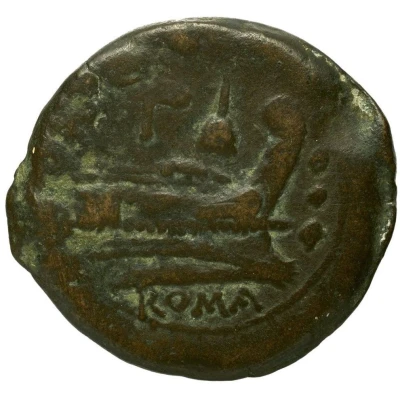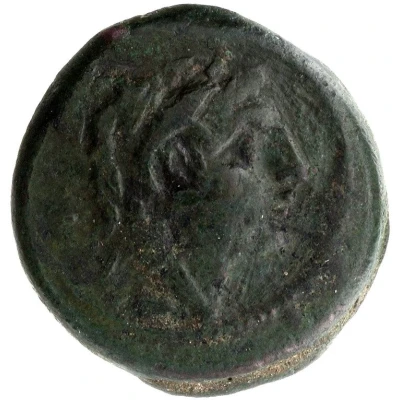
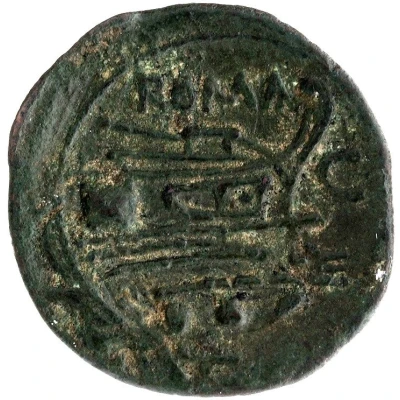

© American Numismatic Society (ANS)
Quadrans Lucius Cornelius Lentulus; ROMA 211 BC
211 BC year| Bronze | 4.47 g | - |
| Issuer | Rome › Roman Republic (509 BC - 27 BC) |
|---|---|
| Issuing entity | Lucius Cornelius Lentulus |
| Period | Republic (509 BC - 27 BC) |
| Type | Standard circulation coin |
| Year | 211 BC |
| Value | Quadrans (1⁄40) |
| Currency | Denarius of 10 Asses (221 – 141 BC) |
| Composition | Bronze |
| Weight | 4.47 g |
| Shape | Round (irregular) |
| Technique | Hammered |
| Orientation | Variable alignment ↺ |
| Demonetized | Yes |
| Updated | 2024-10-06 |
| Numista | N#385467 |
|---|---|
| Rarity index | 100% |
Reverse
Prow, right. Below, denominational mark. Before, mark.
Script: Latin
Lettering:
ROMA
C
●●●
Unabridged legend:
ROMA
Lucius Cornelius Lentulus
Translation: Rome
Comment
Sardinian mintInteresting fact
The Quadrans coin was used as a form of payment for Roman citizens, but it was also used as a tool for propaganda. The coin's design featured images of Roman gods and goddesses, as well as symbols of Roman power and authority. This was done to promote the idea of Roman supremacy and to reinforce the idea that the Roman Empire was a divine institution. Additionally, the Quadrans coin was made of bronze, which was a common material for coins at the time. However, the fact that it weighed 4.47 grams suggests that it was made with a higher level of craftsmanship than some other coins of the time, which were often made with cheaper materials and had a lower weight. Overall, the Quadrans coin is an interesting example of how currency can be used not just as a medium of exchange, but also as a tool for promoting political and cultural ideologies.
